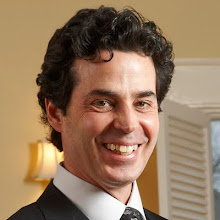I have heard young marketing professionals, who are all very bright and well educated, say something to the effect of, “…just give me 40 or 50 shots and we will pick the ones we want". This sounds reasonable, doesn’t it? Give them a choice.
The ASMP has been suggesting to it’s members to provide better photography by putting more value into fewer images with the intent of separating themselves from the crowd. In doing this the buyer can see the difference in what he is paying for and will be happy with his investment. I believe in this thinking and use this philosophy to create better, more valuable images. If I go out and take forty or fifty shots of a project, I wont be able to invest proper time into any one of them – my images will become nothing more than a mediocre collection of snap shots.
A professional photographer can be a much more valuable member of your marketing team than merely a content provider. A good architectural photographer can help you decide which views of a given project are the best choices for your marketing and design efforts. That way proper time can be spent on each shot to ensure the most unique styling and lighting is employed. The number of final views that will be used should be decided on with the photographer in the initial planning process. It’s in this collaboration that the most stunning and compelling visual stories can be told. While some more complex projects may require many final shots, most don’t require more than 8 to 10 views at most for design competitions. Only one or two are usually used in marketing.
In promoting their plans, it is customary for an architect to prepare a perspective of a project. This same view - or a portion of it - can sometimes be turned into what I call a “money shot”, if it is practical to shoot from the same viewpoint. This isn’t necessarily the only view that is worth putting time and effort into but it is usually a good place to start looking.
In the following example, the first image shows the prospective artists rendering, by Michael Cherepak, of the front of a student housing project at Auburn University. The second is a shot I took myself, inspired by the rendering.
Stephen Allen, my contact with Williams Blackstock Architects on this project, suggested this view because he liked the rendering. I liked the view and opted to shoot it.
Above is a rendering of the cafeteria (left) and athletic complex (right).
When I was shooting this same scene, the athletic complex to the right in the rendering, was fenced off and under construction so I was limited to what I could include in the shot. Also, I could not get to the point of view of the artist (without standing in the middle of another building), but did find a very nice perspective, as you have seen in a previous blog post.
This final example is a daytime shot of the exterior of a building.
As you can see the long single-story building in the day shot is lost with the sky and high-rise in the background. This causes confusion as to which building the photographer is trying to showcase.
Using a different viewpoint, shooting at dusk and placing about fifty lights inside and out, I created a more visually stunning photo.
The following three photos help to tell the story of this very nice renovation.
I hope I have been able to show that carefully considering a limited number of views-and putting your full time and effort into those specific views can be much more valuable than a multitude of “snap shots”.
I want to thank Michael Cherepak for his generosity in allowing me to use his renderings in this blog.
Remember, all photos and art in this blog are copyrighted material.
Till next time…













you are truly amazing and i love your work!!
ReplyDelete